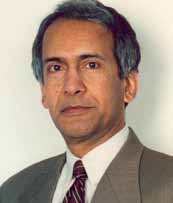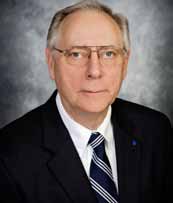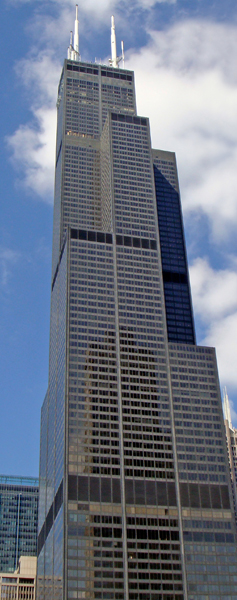Lehigh University
Office or Center Name Here
2013 Fazlur R. Khan
Distinguished Lecture Series
Honoring a legacy in structural engineering and architecture
Distinguished Lecturers |
||||
 |
 |
 |
||
| R. SHANKAR NAIR Senior Vice President exp US Services Inc. |
JOHN M. KULICKI Chairman/CEO Modjeski and Masters Inc. |
ALFREDO H-S. ANG Research Professor University of California, Irvine | ||
| The Evolution of the Skyscraper | Observations on AASHTO Bridge Design | Minimizing the Effects of Uncertainties in Developing Reliability-Based Design Criteria | ||
R. SHANKAR NAIR 
Senior Vice President
exp US Services Inc.
The Evolution of the Skyscraper
Friday, February 15th, 2013– 4:10 pm
Location: Sinclair Lab Auditorium, Lehigh University, 7 Asa Drive, Bethlehem, PA
Overview:
The presentation will outline the history of the skyscraper — the invention of the safe passenger elevator, which made tall buildings usable; the invention of the metal-framed structure, which made them economical; the rapid increase in height from the 10-story Home Insurance Building in 1885 to the 102-story Empire State Building just 46 years later; the stagnation in height for many years even as structural materials and techniques improved rapidly; the present surge in super-tall buildings; and trends for the future. All of these developments will be explored with a particular emphasis on the fundamental engineering principles driving the evolution of these structures. Though presented primarily from a structural engineering perspective, the presentation should be accessible to anyone interested in tall buildings.
MORE DETAILS available on Nair's presentation. (PDF)
JOHN M. KULICKI 
Chairman/CEO
Modjeski and Masters Inc.
Observations on AASHTO Bridge Design
Friday, March 22nd, 2013– 4:10 pm
Location: Sinclair Lab Auditorium, Lehigh University, 7 Asa Drive, Bethlehem, PA
Overview:
The bridge design specifications promulgated by the American Association of State Highway and Transportation Officials (AASHTO) is the primary source of technical guidance for highway bridge designers in the United States. The various states may make exceptions to these provisions and the basic document has been the basis of national specifications in many other countries. This presentation will discuss the pre-AASHTO years from the late 1800’s until the early 1900’s, review the design philosophies utilized by AASHTO to provide structural safety, illustrate how lessons from failures have been incorporated in the design requirements, summarize the development of the latest generation of the specifications, and introduce two potential new directions to make the specifications even more robust and comprehensive.Bridges are a highly visible part of the built environment. In addition to safely transporting drivers over obstacles, the appearance of well-proportioned bridges can add to the view shed and capture the spirit of the public. Some illustrative examples will be presented and the role of design professionals other than engineers will be discussed based on personal observations from recent projects.
MORE DETAILS availalable on Kulicki's presentation. (PDF)
ALFREDO H-S. ANG 
Research Professor
University of California, Irvine
Minimizing the Effects of Uncertainties in Developing Reliability-Based Design Criteria
Friday, April 19th, 2013– 4:10 pm
Location: Sinclair Lab Auditorium, Lehigh University, 7 Asa Drive, Bethlehem, PA
Overview:
Uncertainties are unavoidable in the analysis and design of engineering systems. Traditionally, engineers had to contend and dealt with significant uncertainties through conservative assumptions and applied safety factors to cover the effects of the underlying uncertainties. These assumptions and safety factors are invariably determined on the basis of engineering judgments; as such, the level of conservativeness is difficult to quantify. Proposed is a more scientific approach to handle uncertainties and to provide a systematic method to quantify and analyze their effects – namely, the reliability-based approach. The emphasis is to minimize the effects of uncertainties in the development of practical criteria for the design of infrastructure systems, including the formulation of safety factors and/or load/resistance factors in LRFD consistent with the corresponding level of uncertainties. Examples of real structures will be illustrated, including the optimal design based on minimum life-cycle cost.
MORE DETAILS available on Ang's presentation. (PDF)
2013 Fazlur R. Khan Distinguished Lecture Series Announcement Flyer (PDF)
The Fazlur R. Khan Distinguished Lecture Series has been initiated and organized by Dan M. Frangopol, the first holder of Lehigh's Fazlur Rahman Khan Endowed Chair of Structural Engineering and Architecture.

Willis (formerly Sears) Tower
The Fazlur R. Khan Distinguished Lecture Series honors Dr. Khan’s legacy of excellence in structural engineering and architecture.